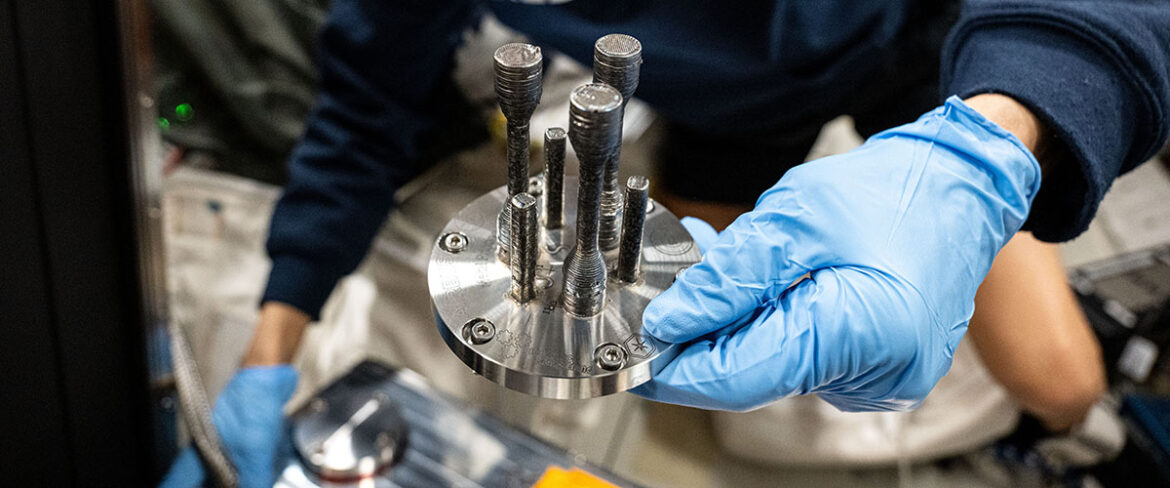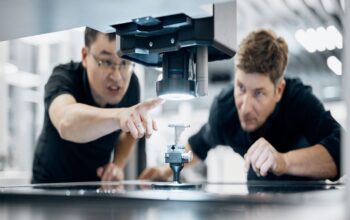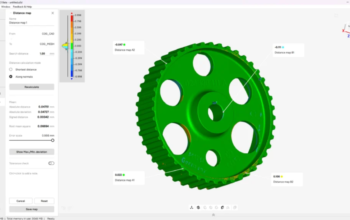Cranfield University has played a key role in the successful production of the first ever metal part 3D printed in space.
Cranfield’s researchers contributed to the development of the world’s first metal 3D printer capable of operating in the microgravity environment of the International Space Station (ISS). It was launched to the ISS at the start of 2024, and in August, the printer successfully printed the first 3D metal shape in space.
In collaboration with Airbus and its partners, Cranfield’s experts were integral to designing and developing the printer’s critical components, including the melting process, hardware, laser source, delivery optics, feedstock storage, and feeding system.
Dr Wojciech Suder, Senior Lecturer in Laser Processing and Additive Manufacturing at the University’s Welding and Additive Manufacturing Centre, led the design team.
Dr Suder said: “This project aims to assess the feasibility of additive manufacturing in space. We’re particularly interested in how microgravity affects the printing process and the quality of the resulting parts. By studying the effects of reduced gravity on liquid metal flow, phase transformation, and microstructure, we hope to determine whether Earth-based printing algorithms can be directly applied in space. This information is crucial for ensuring the reliable and efficient production of high-quality components in space.”
The successful production of the first-ever metal part in space marks a groundbreaking achievement with implications for future space missions. The technology has the potential to revolutionise operations beyond Earth by enabling on-demand part production, repair, and tool construction, reducing reliance on resupply missions and enhancing mission autonomy.
The printed components will be returned to Earth for in-depth analysis at various European research institutions, including ESA’s technical heart in the Netherlands (ESTEC), the astronaut training centre in Cologne (EAC), and the Technical University of Denmark (DTU).
Andrew Kuh, Head of Exploration Technology at the UK Space Agency said: “This ground-breaking accomplishment of 3D printing metal in microgravity is a crucial step to longer duration space missions. Manufacturing components, tools, and spare parts on-demand in space will help overcome logistical challenges of extended missions to the Moon and Mars – where rapid re-supply is not an option. Cranfield University has world-class expertise and this is a great example of how the UK provides key technology for humanity’s exploration of the solar system.”
Cranfield University’s involvement in this pioneering project demonstrates its commitment to advancing the frontiers of technology and innovation in the fields of additive manufacturing and space exploration.
Cranfield has recently joined Space East, the UK’s newest space cluster which brings together leaders from across industry, research and Government in the East of England to develop exciting new opportunities in space technology.









